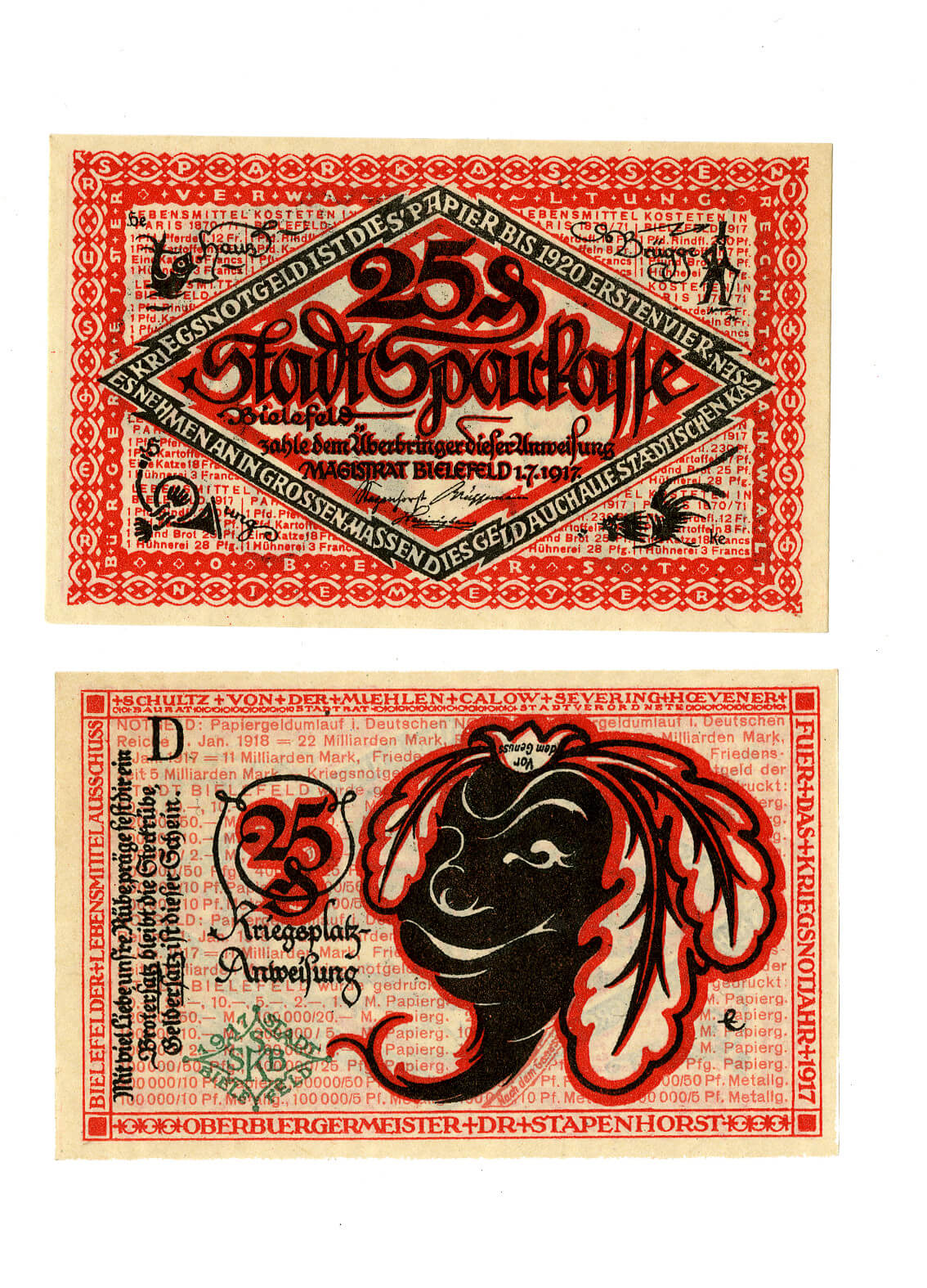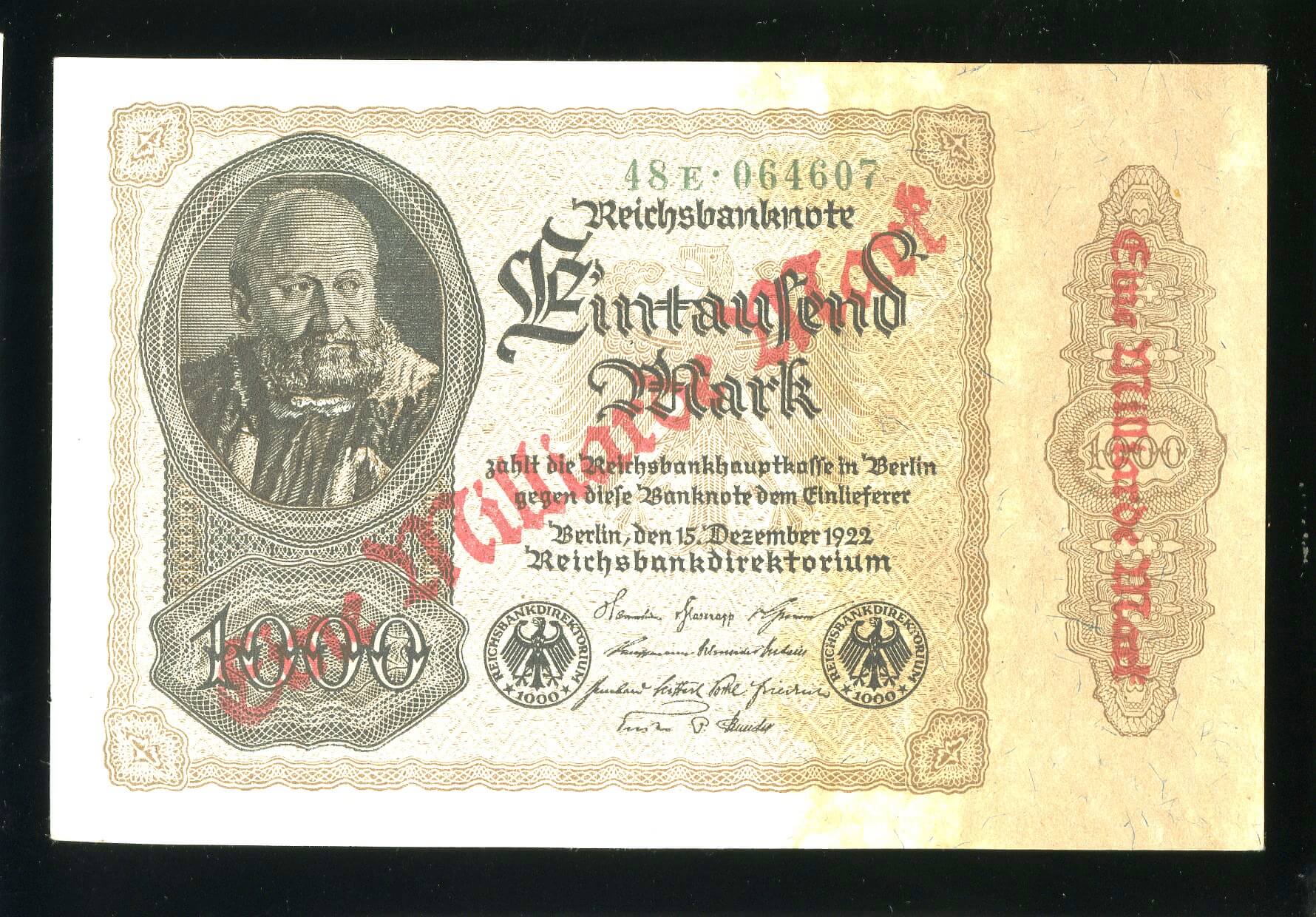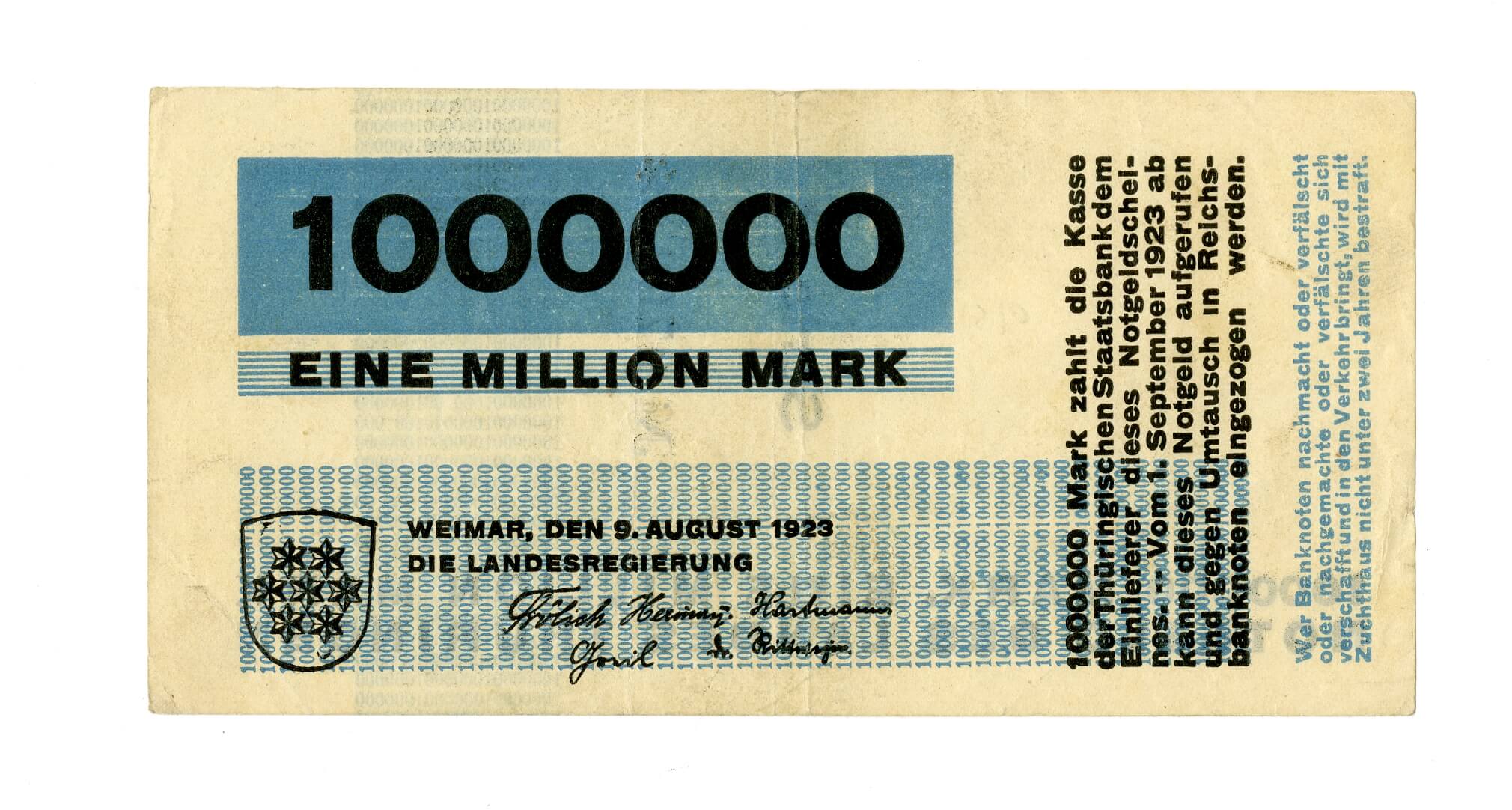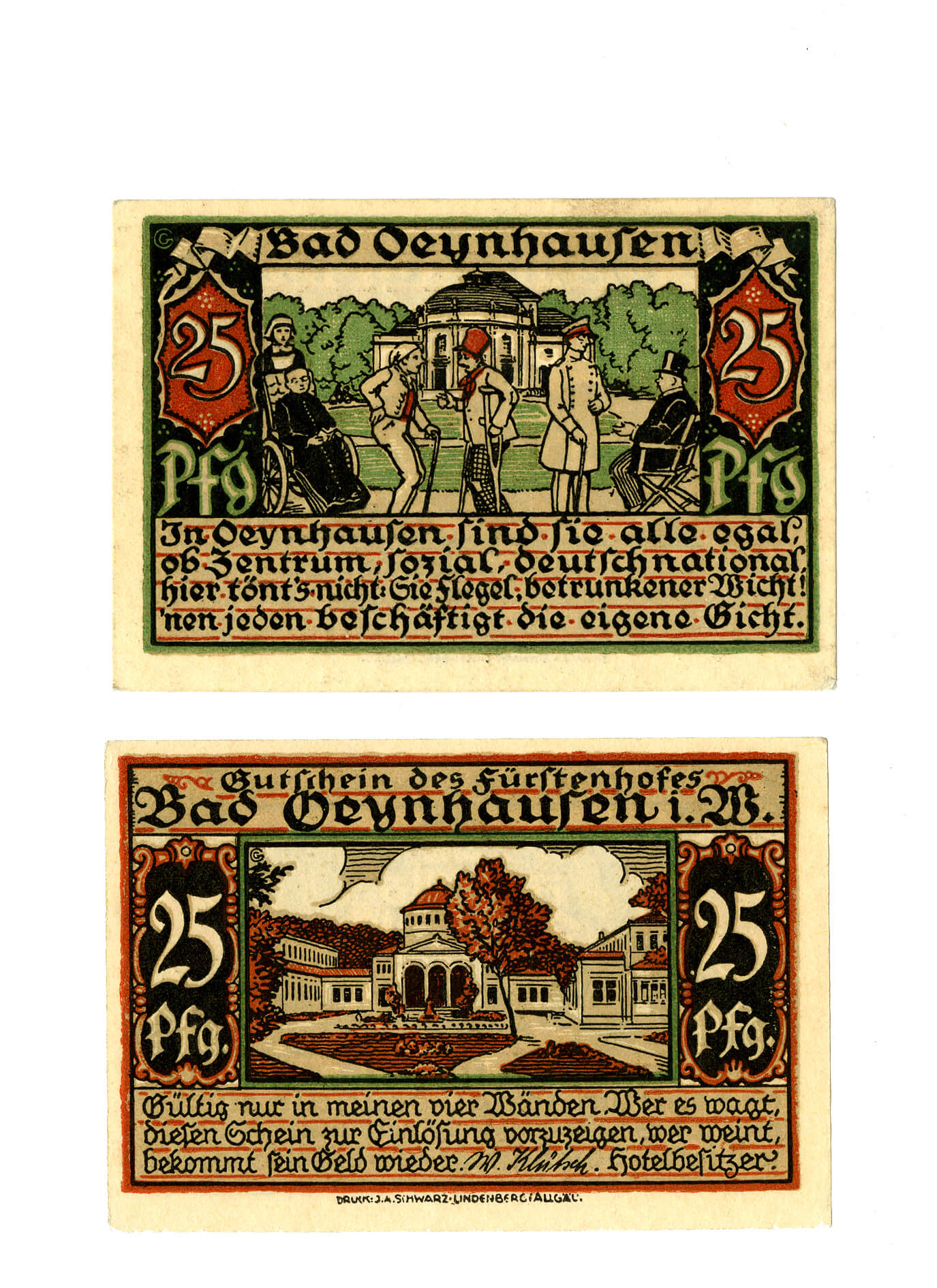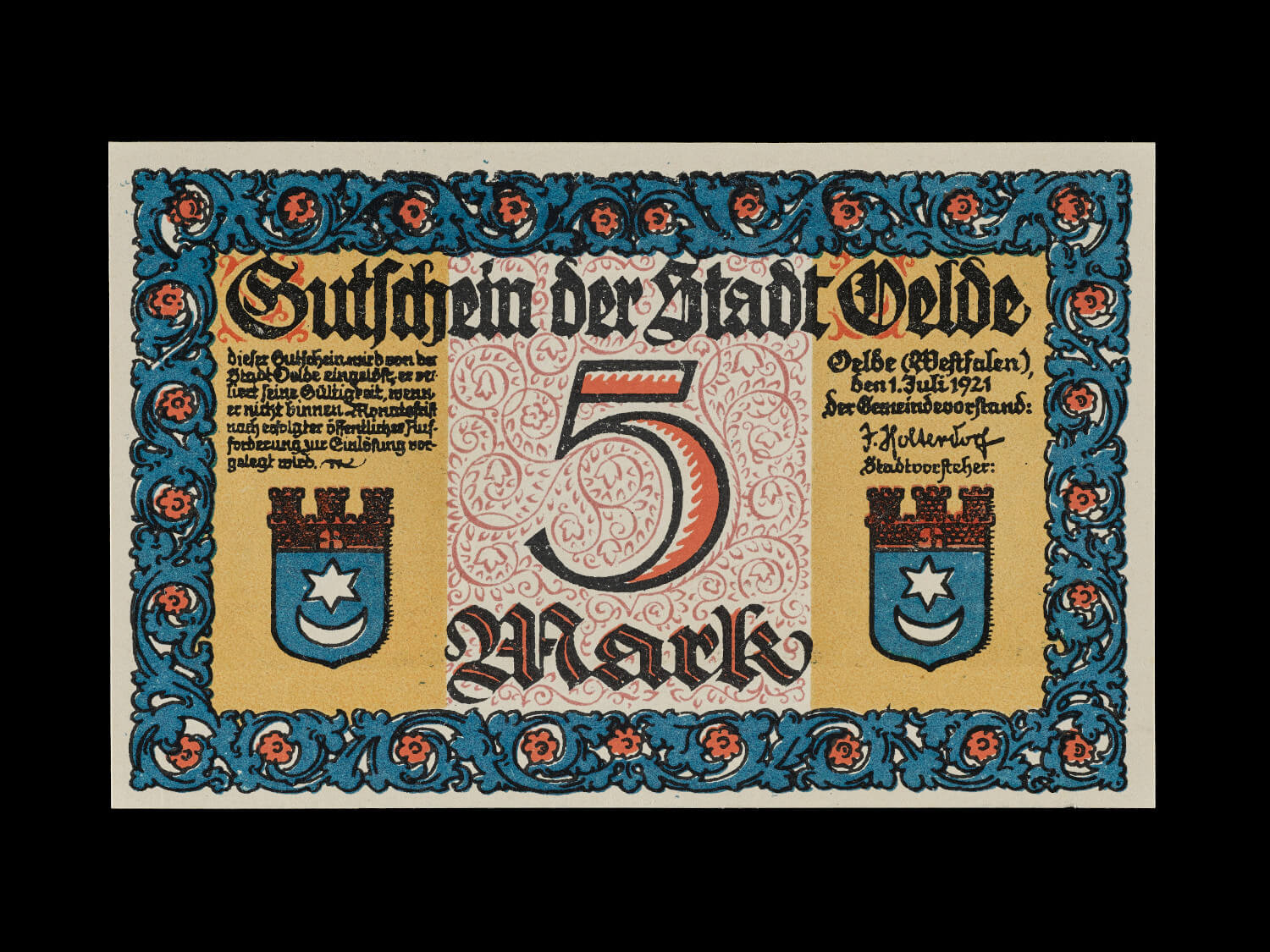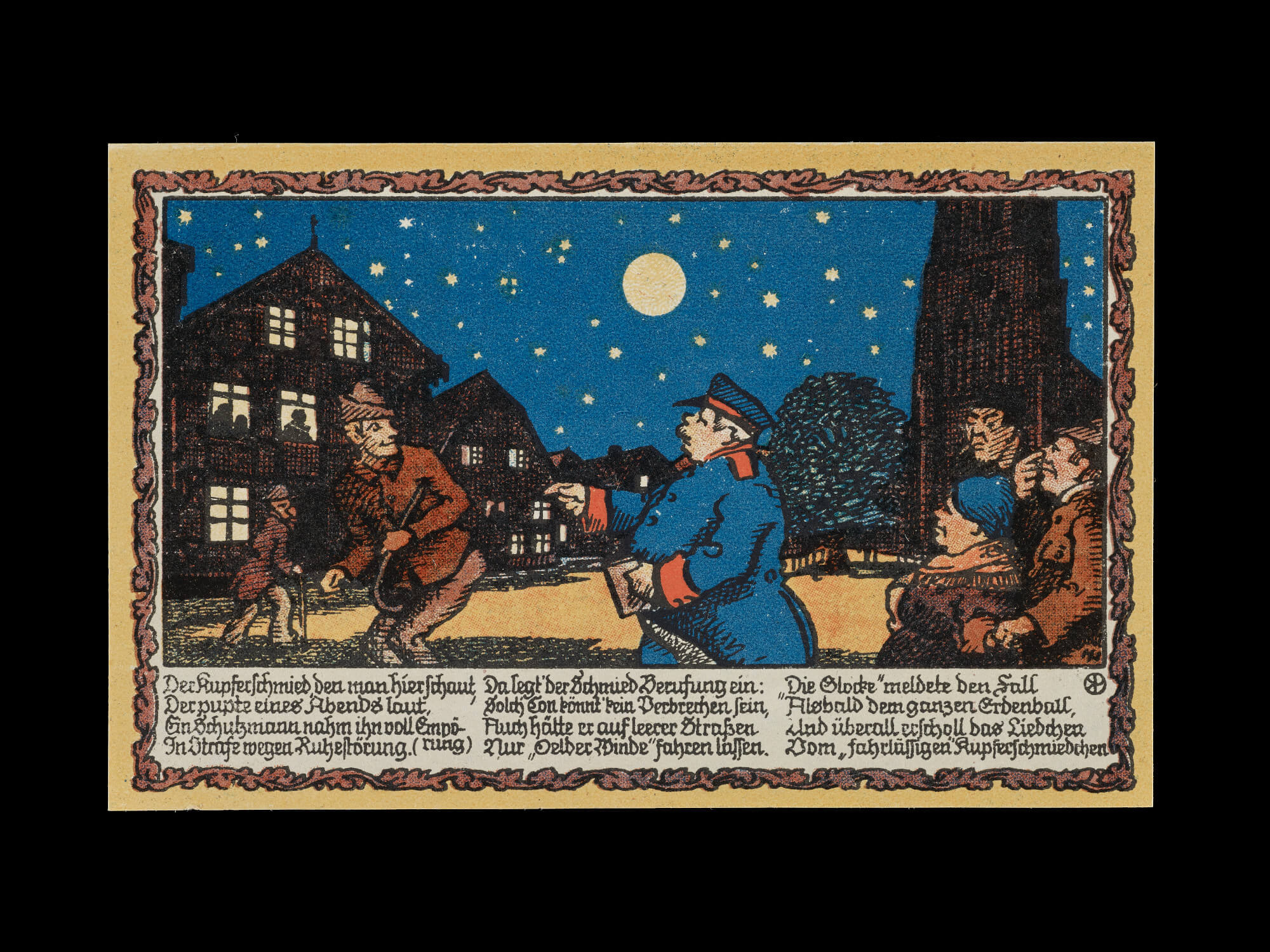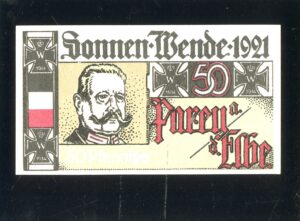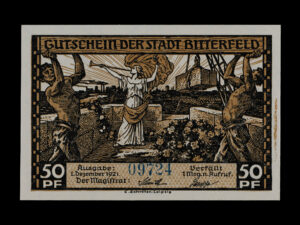During the First World War and the following inflation, many German towns issued their own emergency currency, called Notgeld (emergency money). This money, usually in low denominations, was intended to combat shortages in small change at a local level. However, Notgeld quickly became a collectible and towns designed it to especially appeal to collectors. The colourful and intricate Notgeld notes are a fascinating and almost untapped source of the cultural and political history of the war and the early Weimar Republic. Many of the notes comment on the inflation or sport political messages. Because the relative majority of the notes come from small towns and villages, Notgeld additionally is a great source to explore the rural and small-town Weimar Republic, a chapter often forgotten in historiography. This is the first major exhibition on Notgeld in the UK.
Why Did Germany Need Notgeld?
Notgeld was first issued in August 1914, within the first week of the outbreak of the First World War. The exhibition contains two notes from towns in West Prussia, in modern-day Poland. The notes are simple cardboard slips with the signature of local bürgermeisters on them. One of the notes sports the slogan ‘God with Us’, the infamous slogan German soldiers had embossed on their belt buckles as well. Scarcity of metals later in the war made the issuance of paper Notgeld much more commonplace. The designs of the notes became more elaborate. Many notes commented on the war and were used as propaganda. In one design on display an artist included a hidden message, criticising the dire food situation in Germany in 1917. Hidden within the seal of the town, the artist included the words ‘sweet hope’ above a picture of a ham, and ‘thus we live’ above an image of a turnip.
Banknotes Made for Collectors
Surprisingly, emergency money did not disappear after the war ended. Many Germans had begun collecting the colourful notes. From 1919, towns made a profit by issuing local Notgeld and ‘selling’ it to collectors all over Germany. The exhibition includes two Notgeld albums of collectors from the 1920s. There were thousands of different designs and even minor villages issued their own Notgeld. The myriad designs give an insight into the turbulent political and cultural life of Germany at the time.
Many notes show references to local history, fairy tales or legends. For example, one note from Cologne refers to the alleged pact with the devil that a master builder struck to build the city’s grand cathedral. Other have humorous content or advertise local trade and tourism. At the same time, there are nationalist notes that demand the return of colonies to Germany, promote the image of authoritarian Paul von Hindenburg, as well as anti-semitic notes. The Notgeld illustrates the difficult position the early Weimar Republic was in, as it had little support from large parts of the German population.
50 Trillion Marks!
During the hyperinflation in 1923 Notgeld played a pivotal role as well. As the Reichsbank could not keep up with printing ever new notes, the government allowed towns and even companies to issue their own emergency money with denominations of millions, billions and even trillions of marks, at the height of the inflation. The note with largest denomination in the exhibition is from Duisburg in western Germany, denominating a whopping 50 trillion mark or 50,000,000,000,000. The objects on display show the hurried character of these emergency currencies, which were often only printed on one side. At the end of November 1923 the hyperinflation ended with the introduction of the Rentenmark. A less known fact is that the introduction of the Rentenmark was accompanied by a ban on Notgeld, which had contributed enormously to the currency crisis.
Other key objects in the exhibition include Notgeld notes from Thuringia made by the Bauhaus, and unusual notes made out of silk or leather, intended to advertise local textile and leather industry. The British Museum has one of the largest collections of Notgeld in the UK and has collected the notes from the time of their original issue. However, the holdings were increased in 2009 through a generous donation of the IFS School of Finance.
This exhibition on Notgeld is part of a collaborative doctoral studentship project with University College London and is being funded by the Arts and Humanities Research Council (AHRC).
For more information about the exhibit, visit the website of the British Museum.
You can find more information about German emergency money on the American Numismatic Association’s website.
BBC Radio has published an interview with the former director of the British Museum Neil MacGregor, where he talks about the emergence of Notgeld during WWI and the hyperinflation crisis in the 1920s.




